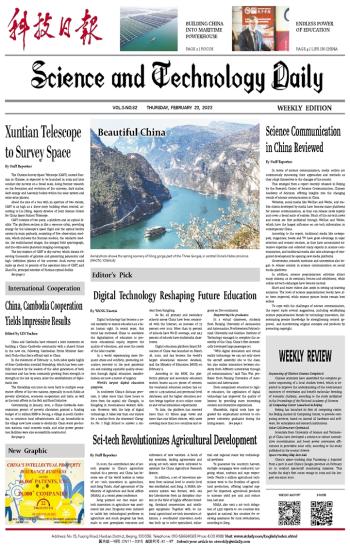
 Endless Power of Education
Endless Power of Education Building China into Maritime Powerhouse
Building China into Maritime Powerhouse Xuntian Telescope to Survey Space
Xuntian Telescope to Survey Space Beautiful China
Beautiful China Science Communication in China Reviewed
Science Communication in China Reviewed Digital Technology Reshaping Future Education
Digital Technology Reshaping Future Education China, Cambodia Cooperation Yields Impressive Results
China, Cambodia Cooperation Yields Impressive Results WEEKLY REVIEW
WEEKLY REVIEW Sci-tech Revolutionizes Agricultural Development
Sci-tech Revolutionizes Agricultural Development New Graphic
New Graphic WECHAT ACCOUNT
WECHAT ACCOUNT
In terms of science communication, media outlets are continuously innovating their approaches and methods as they adapt themselves to the changes of the society.
This emerged from a report recently released in Beijing by the Research Center of Science Communication, Chinese Academy of Sciences, offering insights into the changing trends of science communication in China.
Websites, social media like WeChat and Weibo, and mobile clients developed by media have become major platforms for science communication, as they can release news rapidly and cover a broad scale of readers. Much of the sci-tech news and events are first published through WeChat and Weibo, which have the largest influence on sci-tech information in contemporary China.
According to the report, traditional media like newspapers, magazines, books and TV have great advantage in topic selection and content creation, as they have accumulated extensive expertise and collected many experts in science communication, and traditional media also take advantage of integrated development by opening new media platforms.
Government, research institutes and universities also began to release content in science communication on social media platforms.
In addition, science popularization activities attract many citizens, as do seminars, forums and exhibitions, while online sci-tech exchanges have become normal.
Short and micro videos also assist in setting up learning scenarios. The level of science popularization books have also been improved, while science picture books remain best sellers.
To cope with the challenges of science communication, the report made several suggestions, including establishing science popularization brands by technology innovation, disseminating precise knowledge by strengthening content approval, and incentivizing original concepts and products by protecting copyright.

 Next
Next



